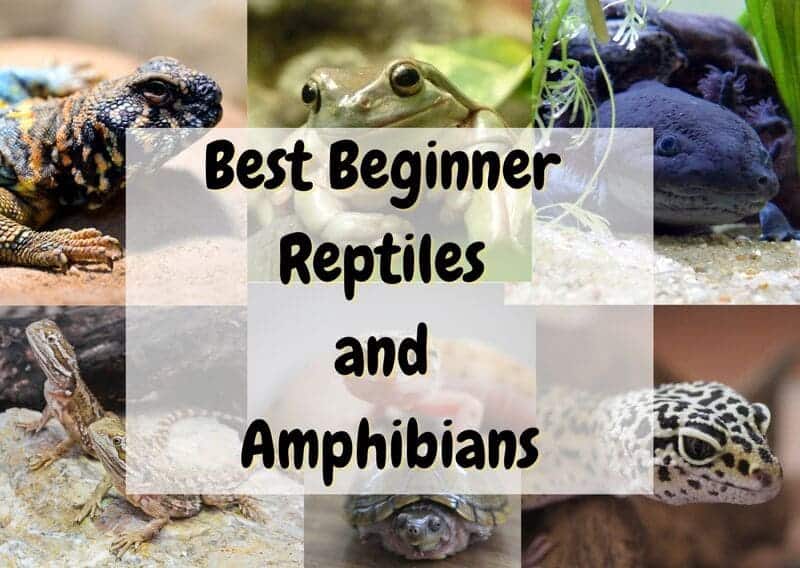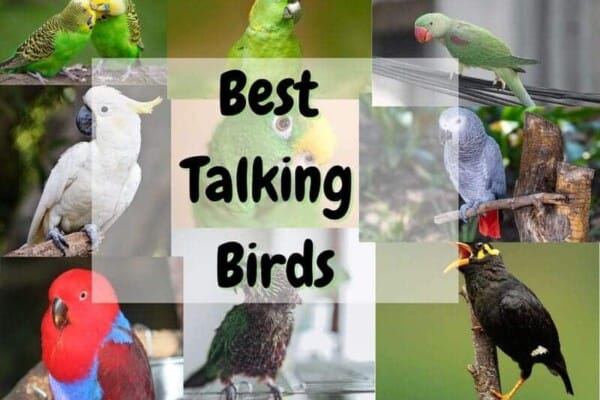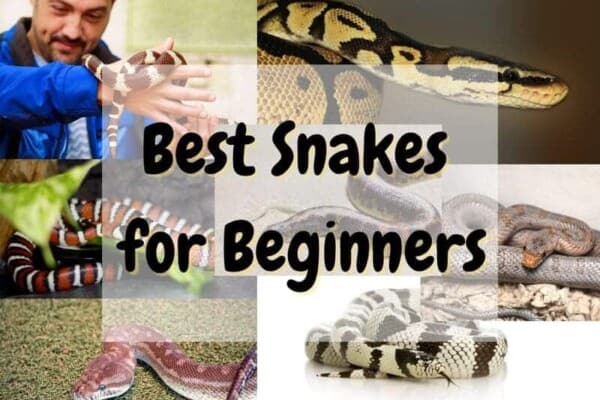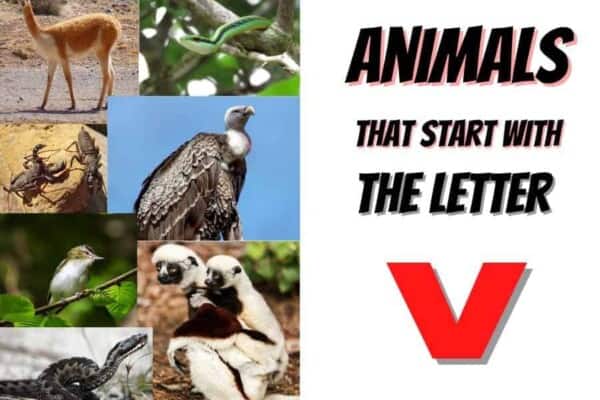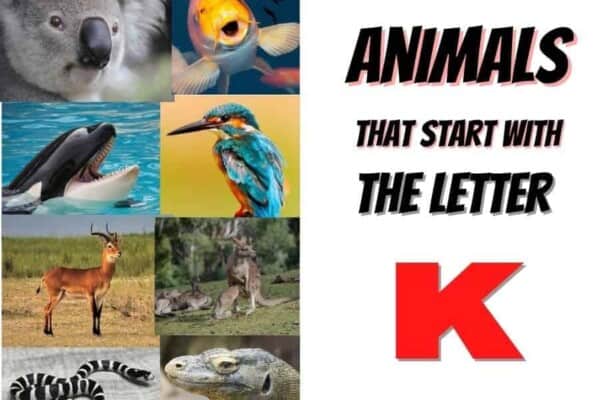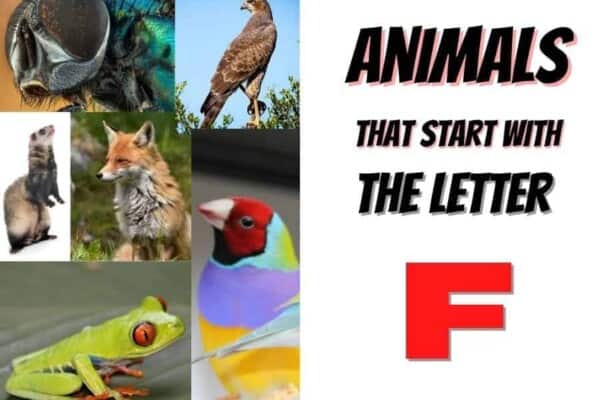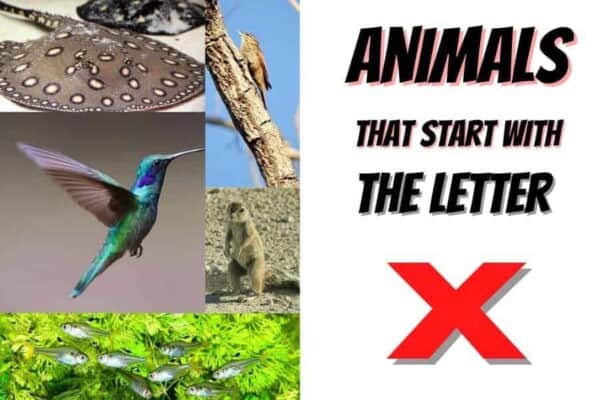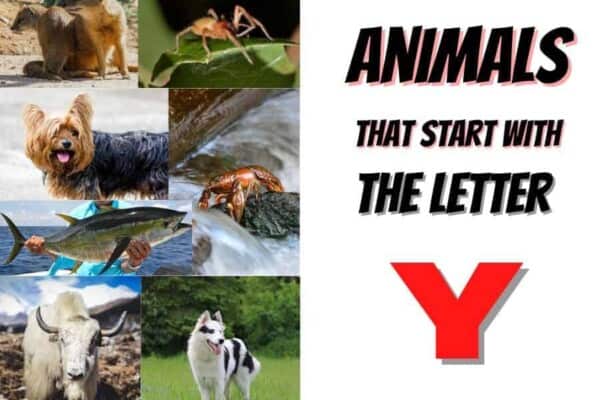It’s a bold decision to choose the right reptile or amphibian with lots of small details that help make their habitat and daily life more comfortable. In this guide, you will find the 10 best beginner reptiles as well as the 10 best beginner amphibians. We will also share some great tips on picking up one of these popular and fun critters as a pet.
10 Best Beginner Reptiles
1. Bearded Dragon
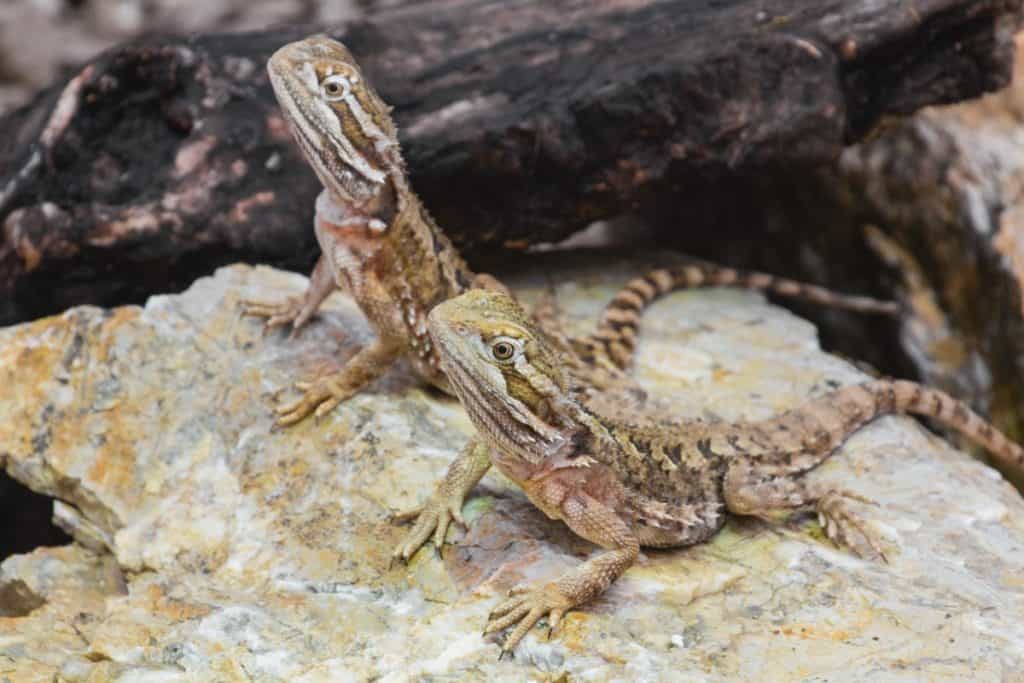
Perhaps you like a spiky-looking miniaturized dinosaur to take care of, but luckily these guys aren’t as pokey as they really appear. These little softies are easygoing as most bearded dragons only grow to be 16 to 24 inches in length. The advantage is that they’ll live 10 to 15 years old, making them a long-lasting reptile. The average cost is around $40 but will be pricier more exotic-looking versions of this breed.
2. Ball Python
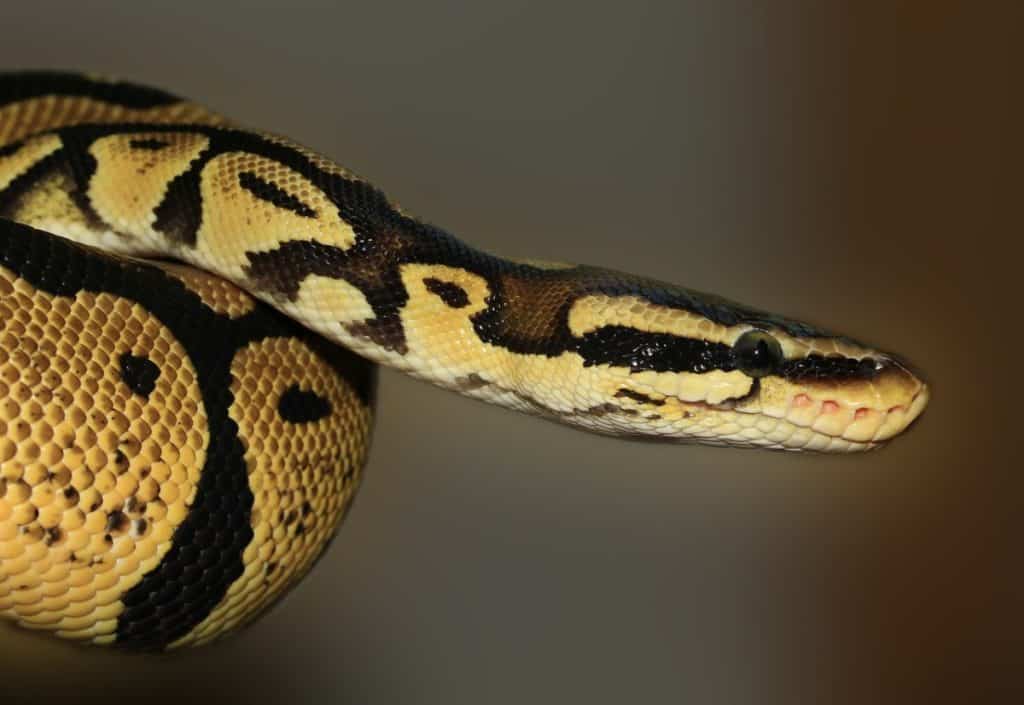
These satisfying python snakes are great additions to any reptile collection since they are so easy to handle and are impressively colorful. Their vividly colored skin and handling ability make them perfect even when they grow to be 4 or 5 feet in length. If you’re looking for a cool pet that is going to give you the most mileage, an average ball python will live up to 30 years. You can hope for a starting price of $50 but on average this usually starts at 100-200.
3. Crested Gecko
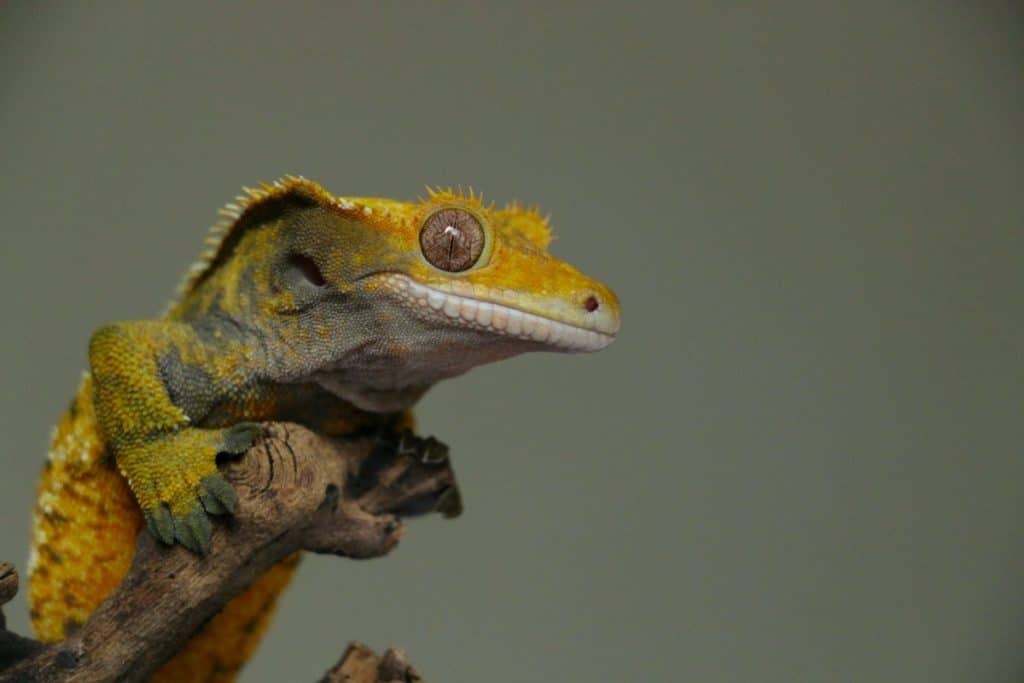
Do you like a reptile that welcomes you with a smile no matter what mood you’re feeling? Crested geckos make great aquarium pets that can live upwards of 5 or 10 years in the right conditions. These majestic eye-ball licking geckos are not going to take up much space with only 5 to 8 inches in full-grown body length. You can expect $50-100 but this cost goes up for more exotic versions.
4. Blue-tongue Skink
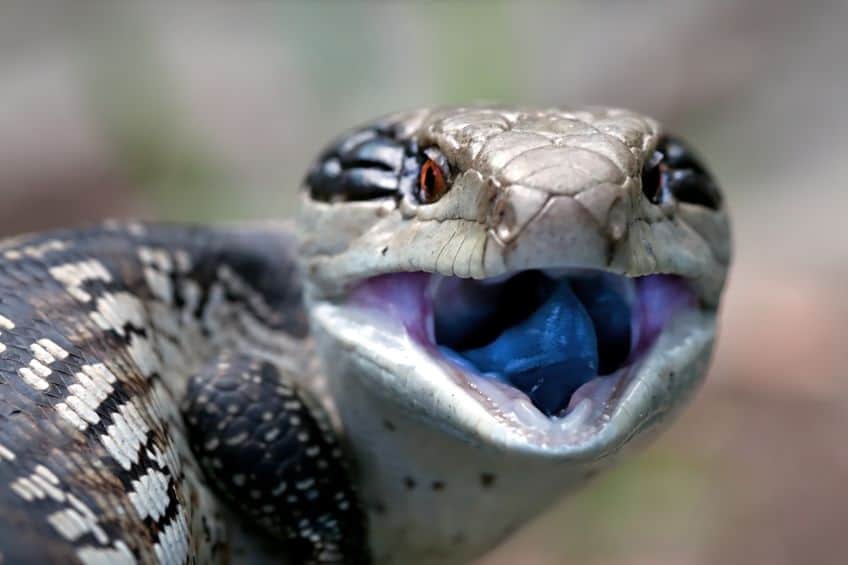
You’ll never get bored of the waxy-skinned appearance and the bright blue tongue that your skink appropriately likes to show off. These ultimate reptile lounge lizards can grow upwards of 3 feet long from head to tail and are one of the few reptiles that readily tolerate being held. They can grow into their senior years after 20 or more years if not longer in some cases. These will often start at $150 and up depending on the breed and color.
5. Milksnake
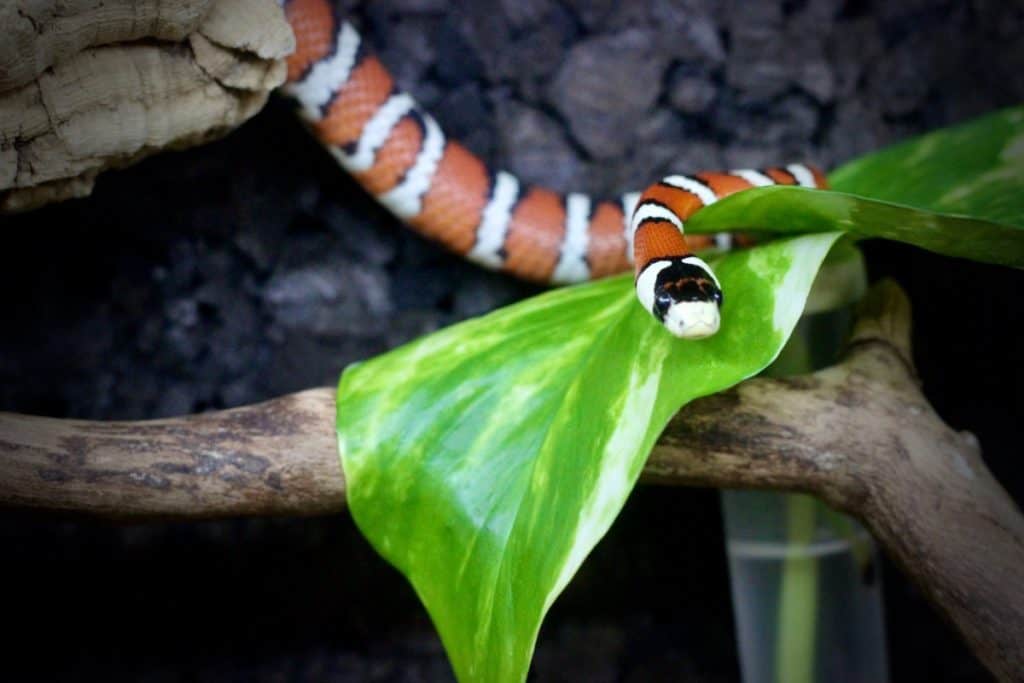
These friendly jacks are such big pretenders that are so easy to spot in movies where you see those so-called poisonous copperhead snakes. In captivity, a milk snake can grow upwards of 69 inches in extreme cases, but more often they only reach 32 inches or so. Some of the more exotic milk snake breeds will be a vivid pumpkin and yellow striped color and live as long as 20 years or more. They can cost $50-300 depending on the variety.
6. Greek tortoise
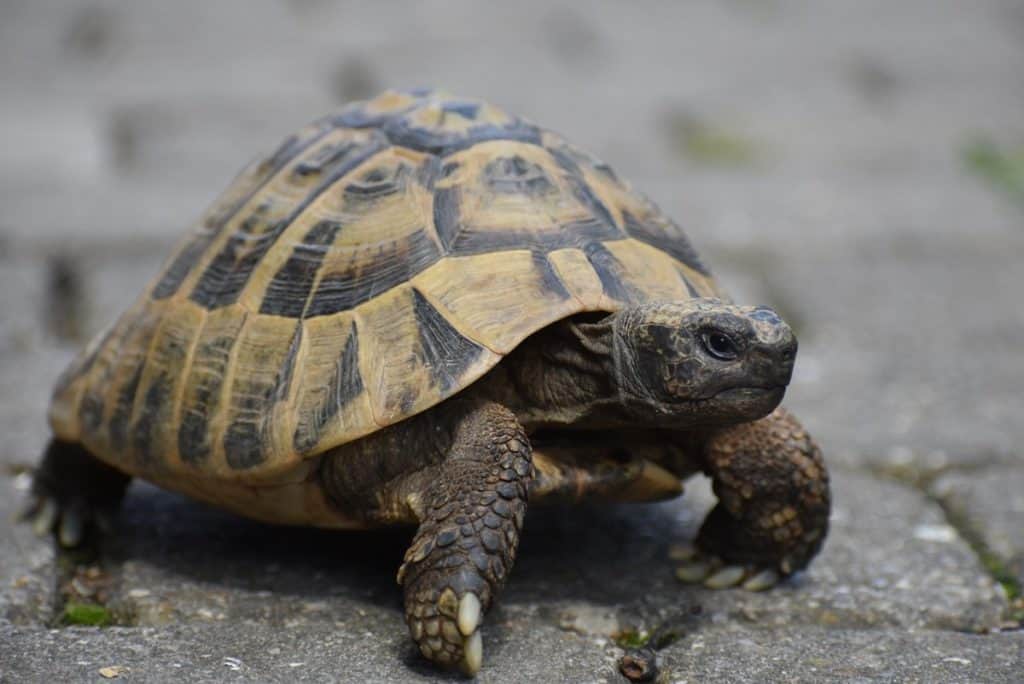
Talk about a buddy you can have for an entire lifetime, the Greek tortoise will often outlive their owners and cross over to their kids! The average lifespan is an amazing 125 years, yet some experts have reported as many as 200 years in isolated cases! Oddly as it sounds, they only grow to be 5 to 8 inches but could be impressive reptiles growing to be 10 or 11 inches from head to tail. They usually cost $200-300 when they are small.
7. Mud and Musk turtle
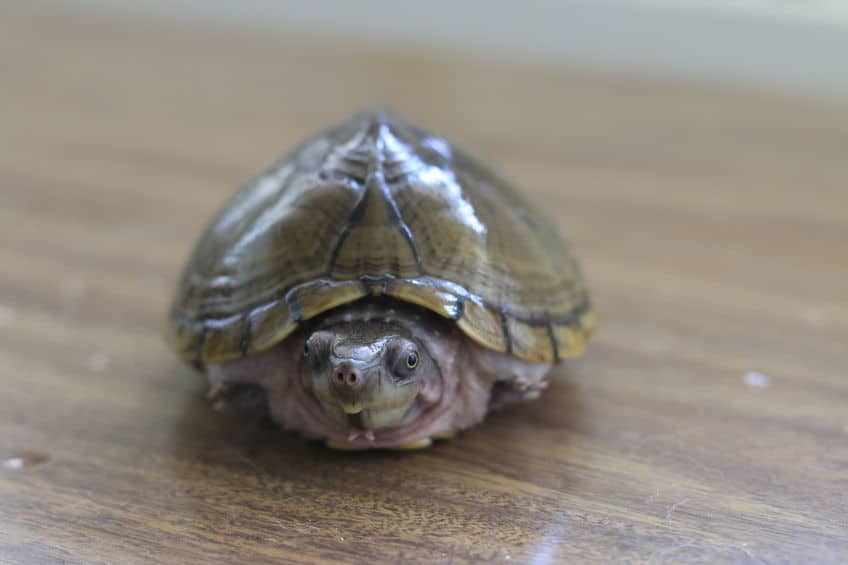
These are rather small turtles that are cool aquarium pets since they never outgrow their habitat and start at $10-50 per turtle. These often feisty turtles can grow as large as 3 to 5 inches in length. They will have an equal idea lifespan that ranges from 35- to 50 years, so you can grow old with them too! Mud turtles live relatively the same with 5 to 10 years less but are the same size.
8. Rosy Boa
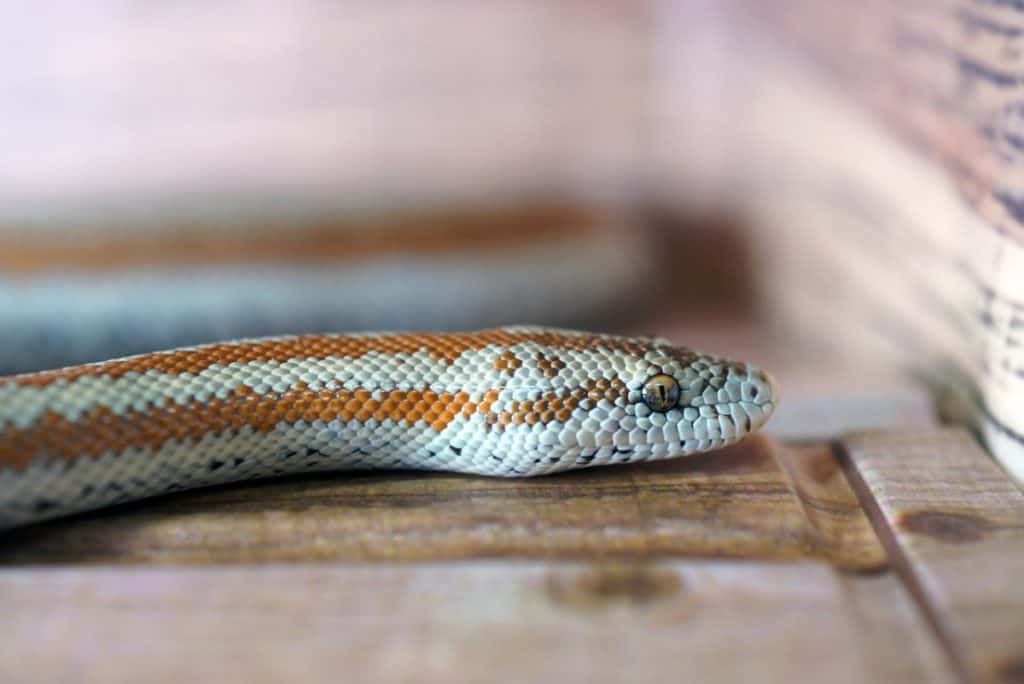
Despite their name, rosy boas can appear with black and chocolate brown horizontal stripes, mottled markings, and wavy circular patterns. The prettier orangey-red versions measure 2 to 3 feet in length when fully grown and can live record lifetimes of up to 60 years! They cost around $75-100 from breeders but can cost more for colorful breeds.
9. Leopard gecko
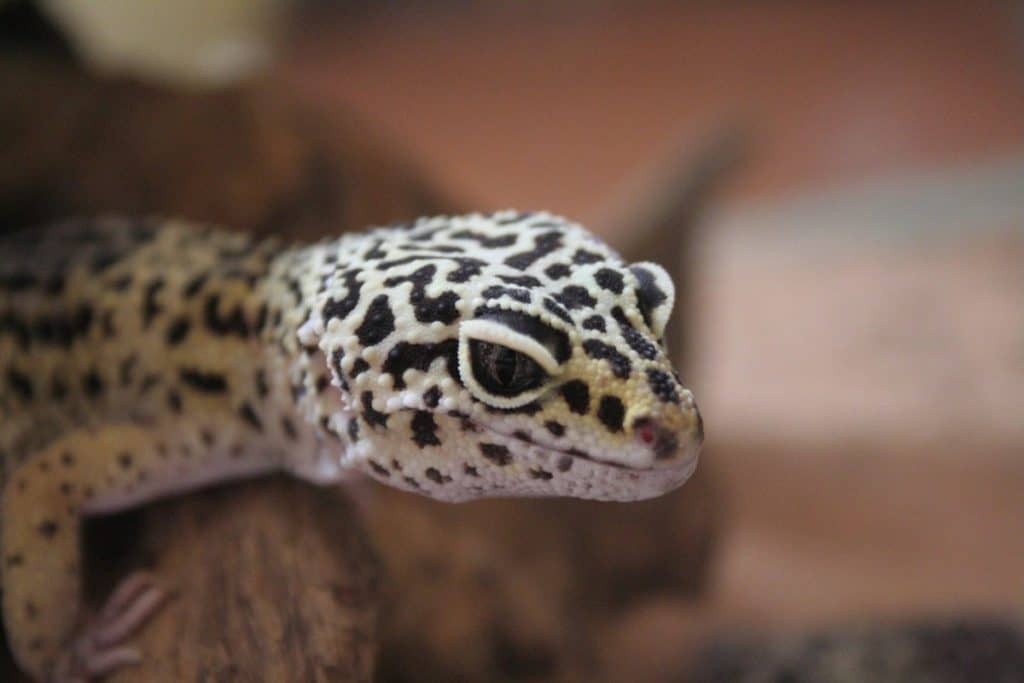
You can expect that $30-50 is the starting cost for this quirky little gecko, yet some breeders can ask up to $100 in some cases. Many different colors will ultimately affect the cost. They will only grow up to 6 to 8 inches in total length. If you raise them in a good environment, they can live upwards of 20 years in a stretch.
10. Uromastyx
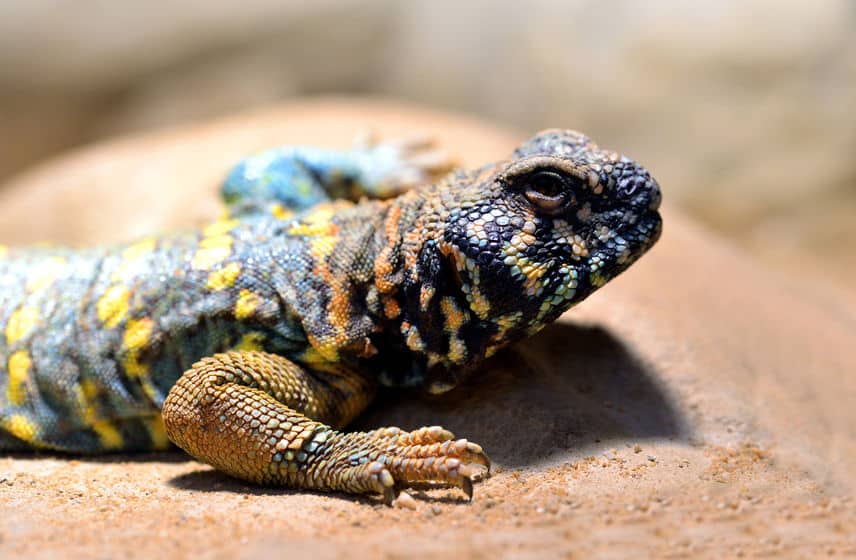
If you’re a big fan of Jurassic Park-style lizards, the Uromastyx is certainly worth the cost. It starts at $75-300 depending on which color or breed you select. According to size, most of these will only grow 10 to 18 in length, but the Egyptian Uromastyx can reach an enormous length of 30 inches. You’ll also be happy to know it lives up to 25 years in captivity and there are over 20 different breeds to choose from.
10 Best Beginner Amphibians
1. Pacman frog
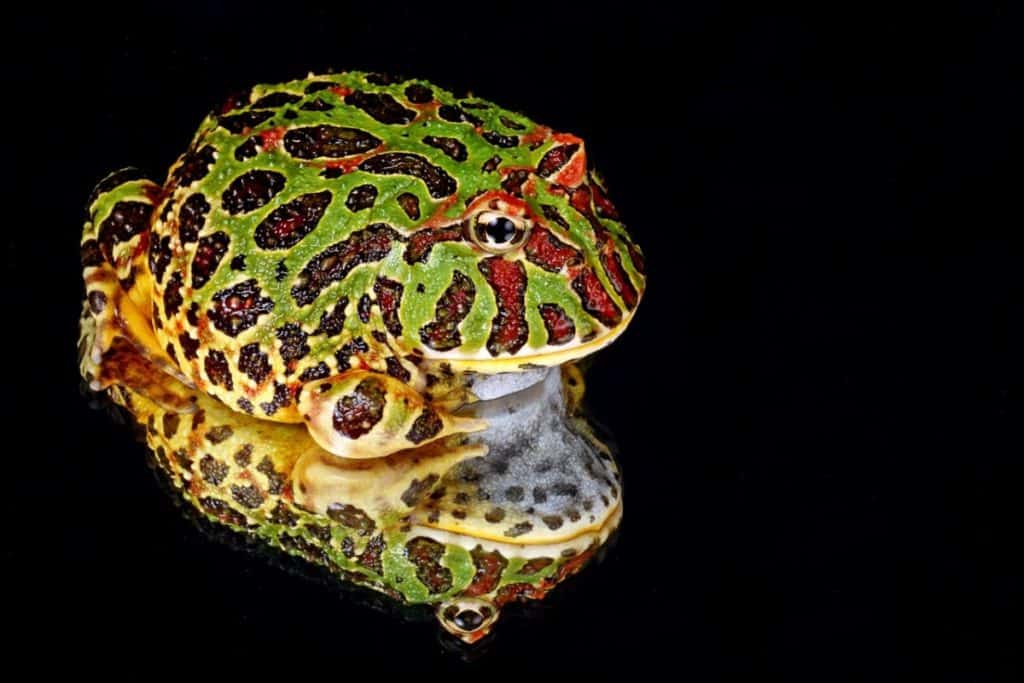
These impressive eating machines can grow upwards of 4 to 8 inches in length and are equally tall in stature with 4-8 inches on average. The cost for a little one only starts at about $15 and is very low-maintenance when taking care of them. They can live no more than 5-7 years but a maximum of 15 years is considered an old croaker. They’re active carnivores and will eat all sorts of live food including baby mice!
2. Axolotl
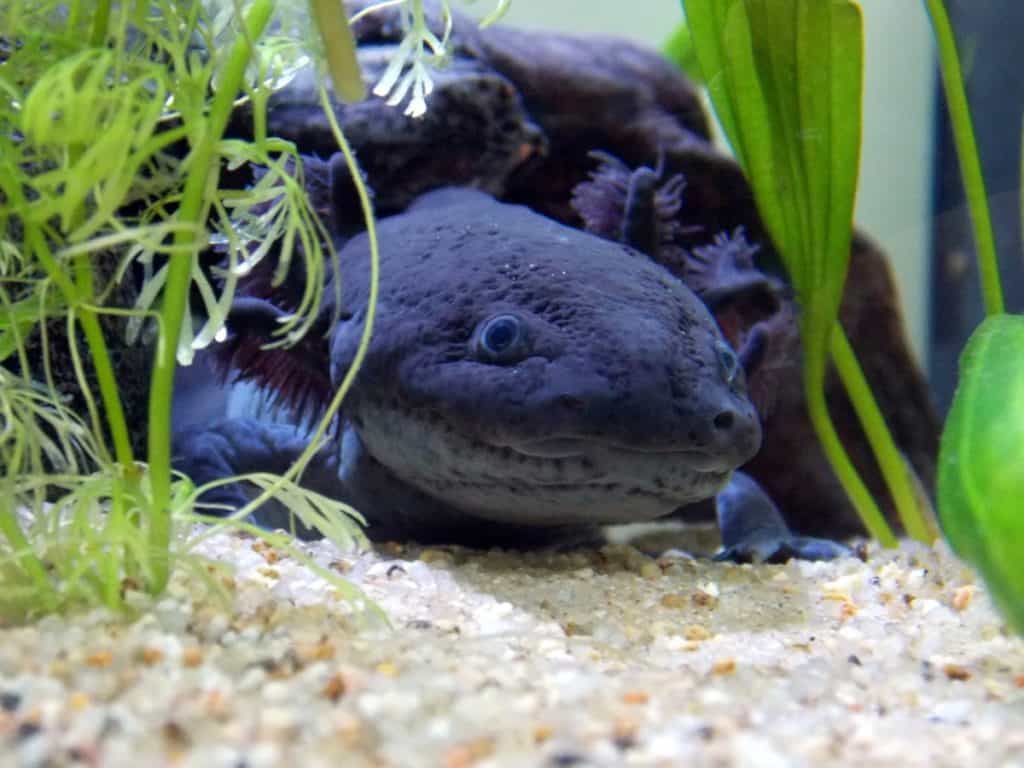
You can figure that an Axolotl baby will only cost you $20 or more if you buy them from any pet store. The average length is often 9 inches but some of these watery beasts can reach 18 inches if you give them enough living space. If you have an aquarium that gives these strange water-based creatures, they’ll live 5-6 years. It’s not unheard of they can live up to 15 years if you really give them what they need.
3. Tomato frogs
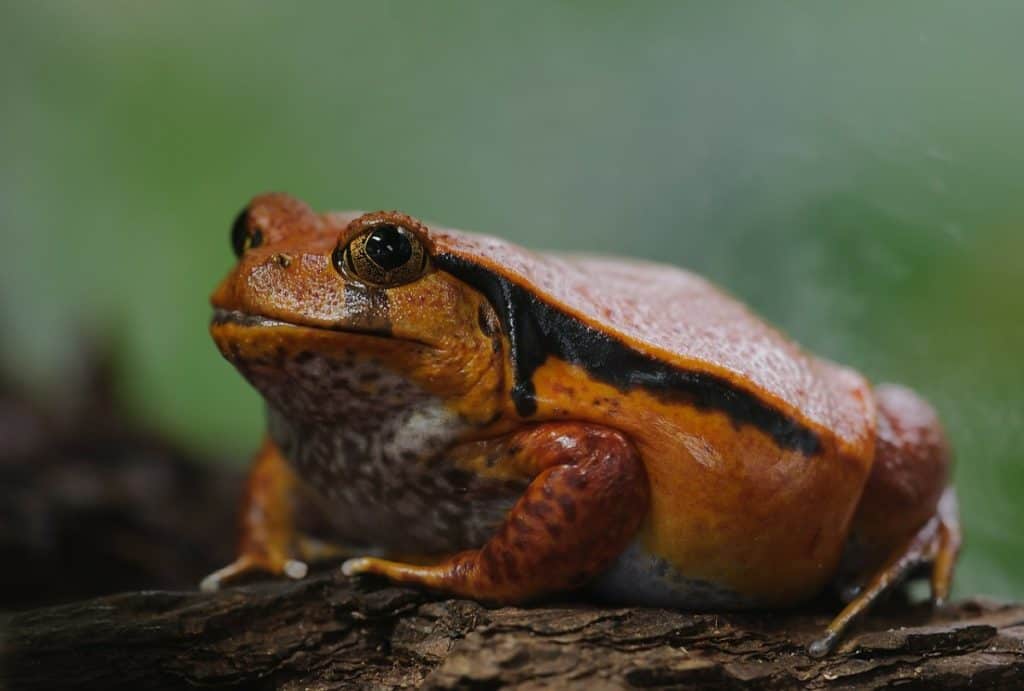
You might think this frog could be mistaken for a nice plump and ripe tomato until it blinks at you! Make no mistake that a tomato frog is eating all the things that want to eat your garden tomatoes! The starting cost will begin at $20-50 with the costlier version being more colorful and exotic breeds. These bite-size frogs can grow to a maximum size of 2.5 to 4 inches long and don’t need a large aquarium accordingly.
They also live 6 to 8 years and the females are especially colorful if you want to have one with vivid color.
4. White’s Dumpy tree frog
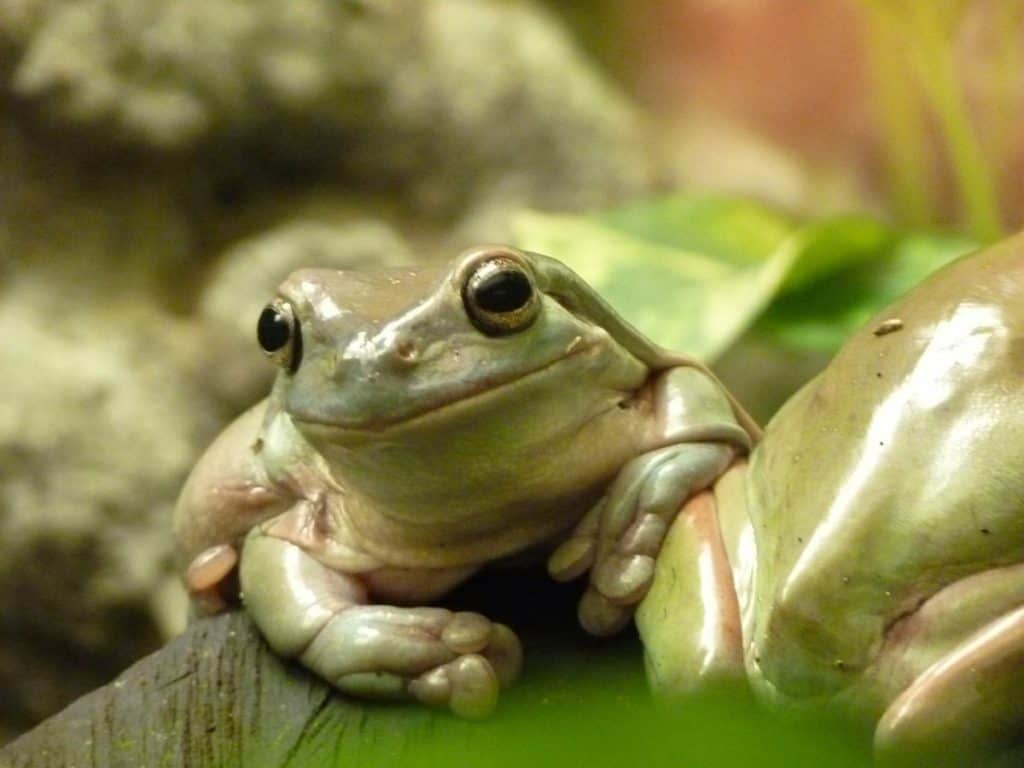
These cute little tree frogs are often $40-50 when they are sold as babies and are a remarkable pale green to turquoise blue. This will obviously affect the selling price. They only reach a length of 3 to 4 inches, yet the females will often be larger than males. These dumpy frogs also grow to be 15 to 20 years old, giving any terrarium a good example of a frog that’s a survivor.
5. African clawed frogs
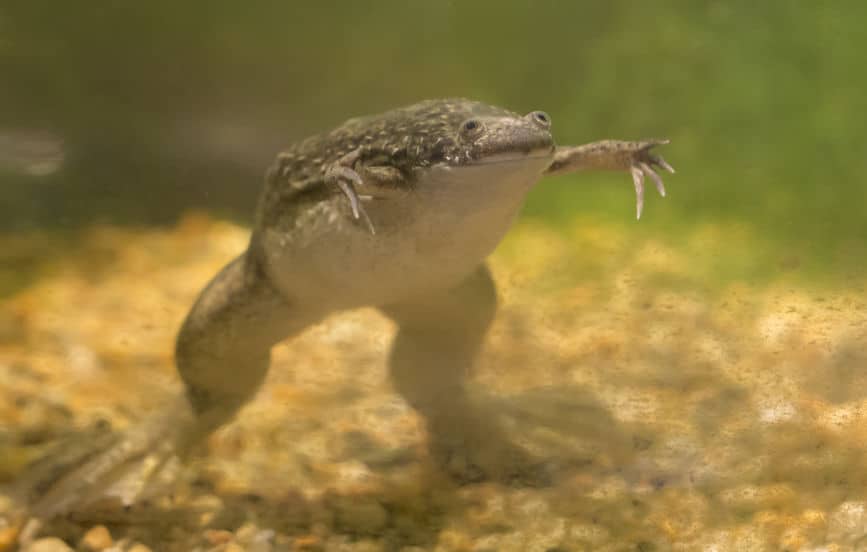
Here’s a great example of a frog that lives up to its’ name, however, the albino version does resemble a swimming featherless chicken. The expected cost is $15-30 depending on where you buy them. Albinos are a bit more expensive and can grow as long as 5 inches when fully grown nose to stretched-out legs. They will also expect to live up to 20 years if you give them continual clean water that is filtered.
6. Tiger salamander
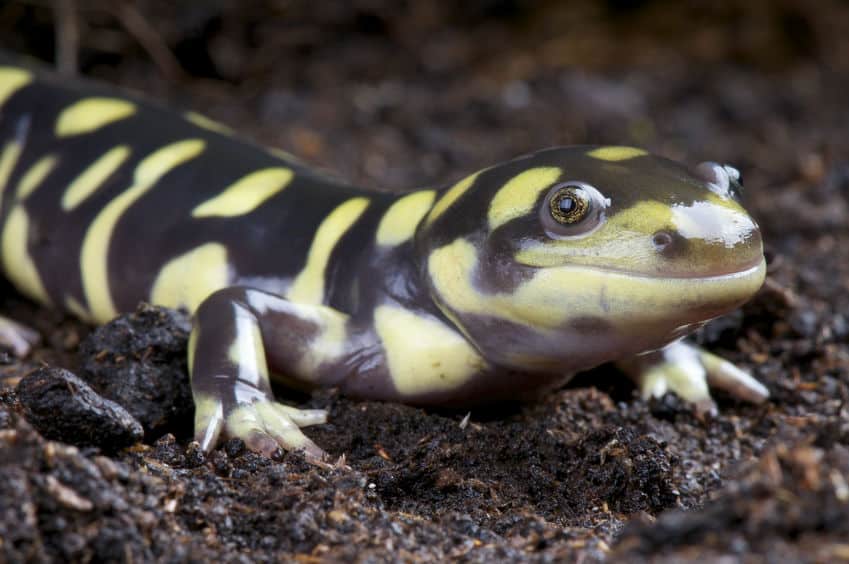
Just like the crested gecko, this is a salamander that always appears to have a smile on its face. Lucky for you the starting cost is just $50 but expect that private breeders could charge more for colorful breeds. It grows to a total length of 6 to 8 inches but has been known to reach 14 inches if the conditions and habitat are right. They will live 12 to 15 years in their aquarium, making them a good long-lasting salamander pet.
7. Red-eyed tree frog
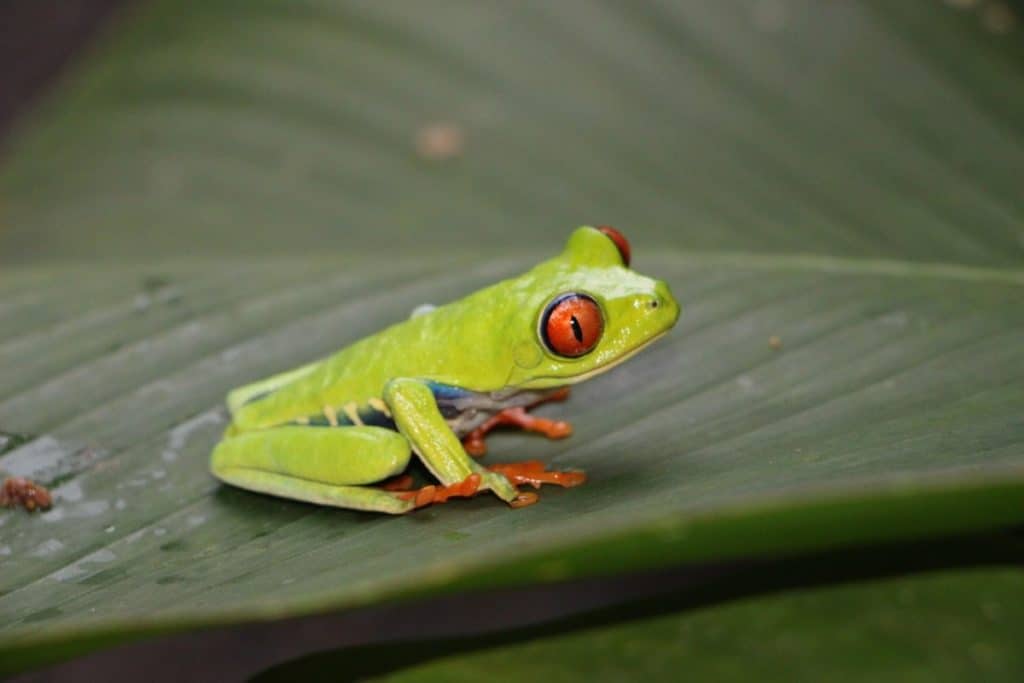
Your typical red-eyed tree frog will stand out as being the poster child for tropical rainforest friends. The average cost is also agreeable starting at $50 at most pet stores that sell them. The males reach 2 inches in length but females reach 3 inches when fully grown. You will also be amazed that these little frogs can live a total of 10 years if you give them a habitat that is best suited for them.
8. Yellow and black dart frog
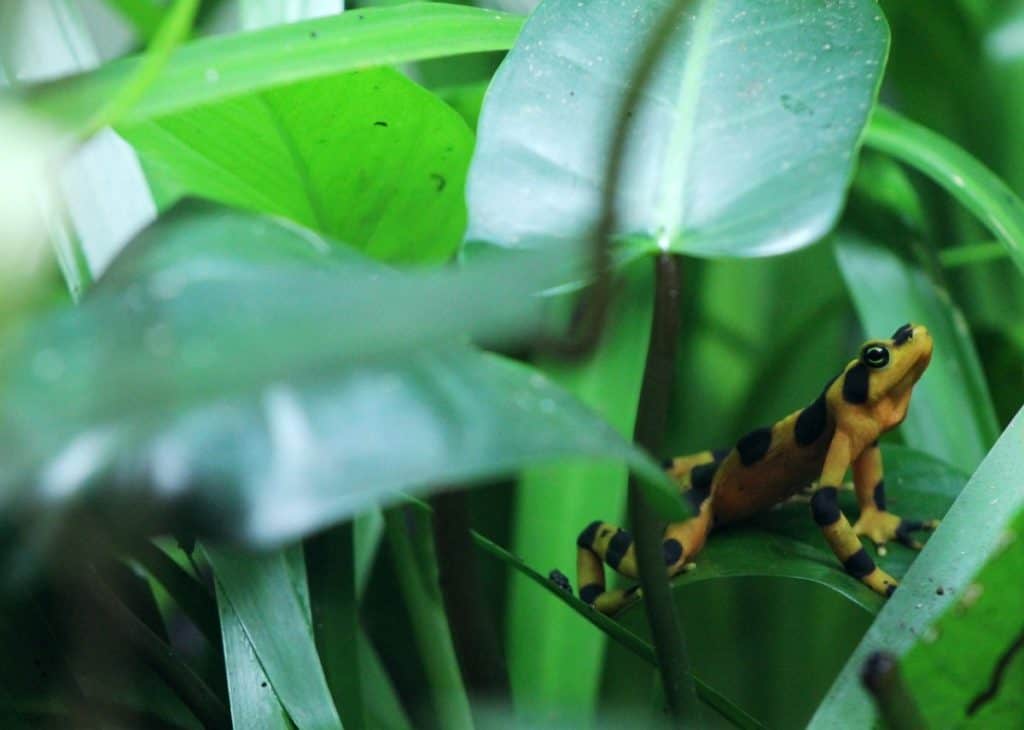
Dart frogs can be poisonous in the wild because of what they eat, but in captivity, they’re completely harmless. The cost of a yellow and black dart frog starts at $30-70 according to the private breeder or pet outlet you buy them from. They are very tiny and only reach 1.2-2 inches in length. So a 5-gallon tank is perfect for them. Expect this breed of frog can live up to 10-12 years if properly cared for.
9. Amazon milk frog
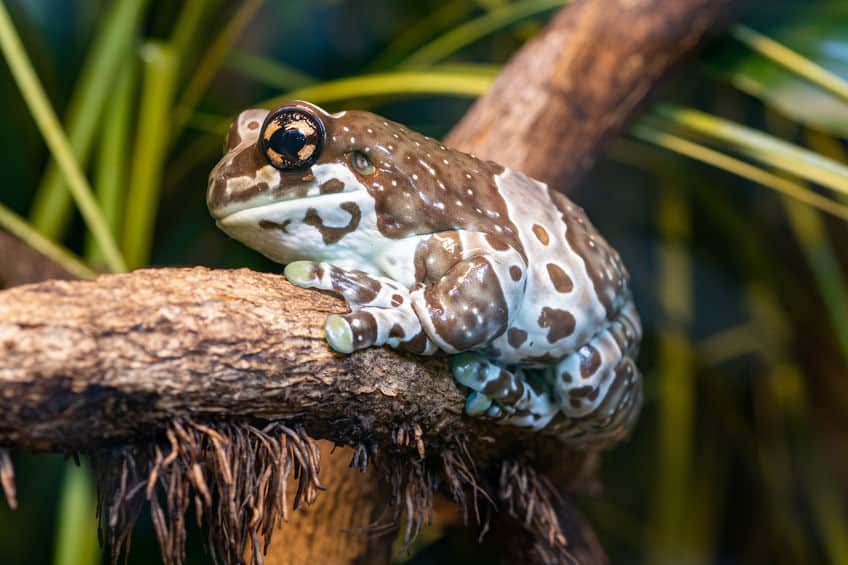
Long before refrigerators became all the rage, Russians would place a brown frog into their milk to prevent it from spoiling. Milk frogs often cost $50 or more and you don’t ever want it in your milk either! They can grow 2.5 to 4 inches in length but females can reach 5 inches in good conditions. They also live anywhere from 8 years up to 25 years if you give them the exact habitat that’s good for them.
10. Oriental fire-bellied toad
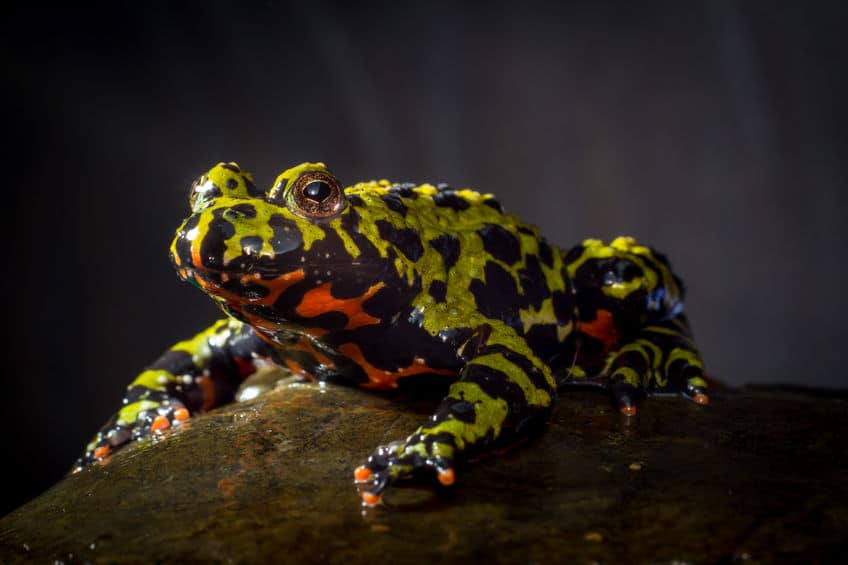
You can’t miss this impressive amphibian with its amazingly red mottled belly. While most pet stores sell this toad for $10-25, it’s best to wash your hands after handling this mildly toxic toad. They grow to become 1 inch to 2 inches depending if it’s male or female. They don’t need a large tank and can live 12-15 years of age when raised in a tank that matches their needs.
Things to consider when choosing a reptile or amphibian
1. Size of the pet
Fortunately for many reptiles and amphibians, they start out nice and small, which means you don’t have to worry about them getting too big. Over several years, most reptiles (like snakes or turtles), can grow to lengths and sizes that are pretty amazing. So you should know their habitat will also need upgrading over the years. If you’re not prepared to own a reptile that grows big and long over a 14-20 year period, then amphibians are your best bet.
This is why first-time owners will prefer smaller creatures that don’t grow so large and take up valuable space in return.
2. Size of the habitat
Another thing to think about is the kind of habitat that is needed for growing reptiles or amphibians. A standard tank will suffice for a certain amount of time, but you need to give them space as they grow. Turtles especially will need larger terrariums as they grow in addition to snakes and certain types of lizards. If you don’t, they can feel cramped and overwhelmed, making your pet more irritable and unhappy.
There is an advantage to owning smaller reptiles and amphibians since they can be stored on a shelf or in a corner on your desk or counter.
3. Pet difficulty level
Despite their lack of emotional attachment to an owner, reptiles and amphibians are still in a class of their own when it comes to personality traits. This is why you need to learn how they act towards you and what can be considered threatening behavior when you approach them. Learning about their lifestyle and habits will give you more reason to treat these exotic pets with more respect than most people give them credit for having.
Once you learn what they do and how they act toward you, keeping them as a pet will be easier to manage. Especially, when it comes to handling and putting your hand in their tank!
4. Overall easiness of care
Basic rules of taking care of your tank pet will include cleaning their water or habitat regularly. Many of these pets will be very simple to care for with very simple rules that you can follow for keeping them happy and comfortable. Once you learn how to care for them properly, they can be wonderful handling pets to a certain point. While others will need constant attention so you can avoid being bitten while handling them.
Try to reproduce the exact type of habitat they will be comfortable with, so they are always in their native-like environment.
5. Feeding Habits
It’s a simple fact that many reptiles and amphibians are aggressive eaters when it comes to their food and diet requirements. Some reptile and amphibian owners might have a weak stomach to find out their snake or frog likes living creatures such as baby or adult mice. Aside from turtles that have a vegetarian diet, most exotic terrarium pets will eat live insects according to their dietary needs.
Many first-owners will find it fascinating to learn how skilled they are at hunting down and catching their food no matter how shocking it may appear to be.
Resources and further reading:
- Health and Welfare of Captive Reptiles, edited by Clifford Warwick, F.L. Frye, J. B. Murphy
- Ecotoxicology of Amphibians and Reptiles, edited by Donald W. Sparling, Greg Linder, Christine A. Bishop, Sherry Krest
Related articles:

